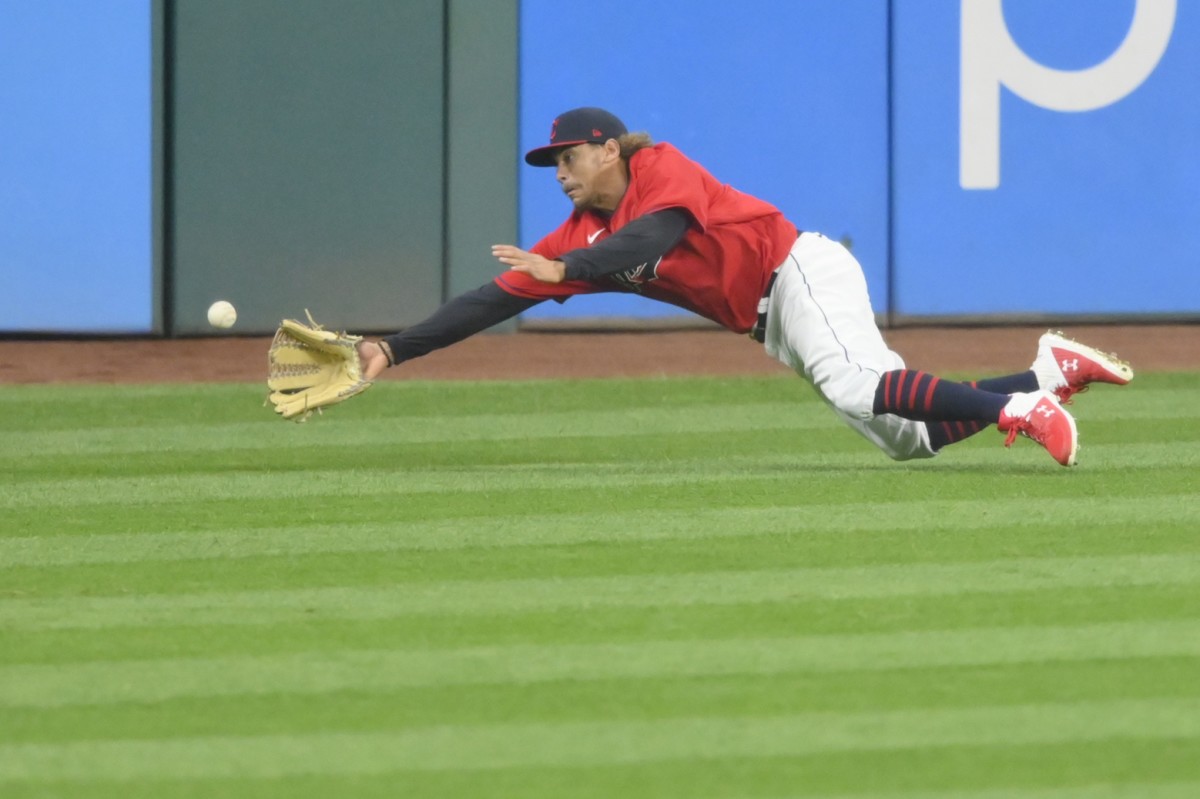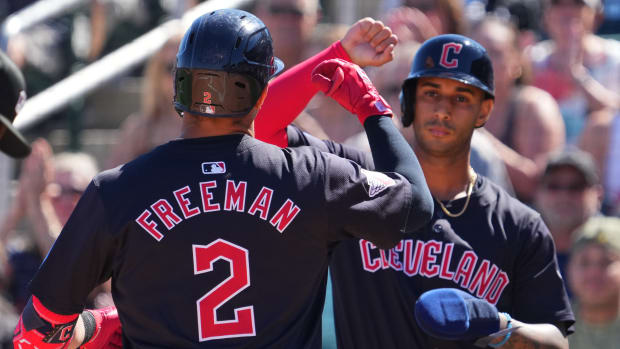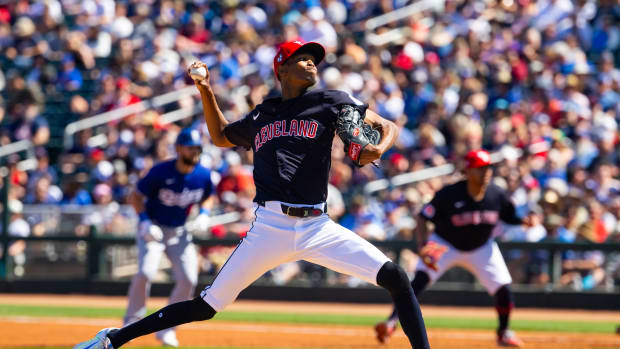Josh Naylor Has Been Unfairly Cast as the Solution to the Indians’ Offensive Woes

If you search Josh Naylor’s name on Twitter, you’ll find plenty of consistency in the commentary surrounding the Cleveland Indians’ new outfielder.
I’ll spare you the details, but the common theme is one laced with scrutiny. This is mostly due to Naylor being the one player Cleveland netted in the recent Mike Clevinger trade who was viewed as a potential offensive upgrade for 2020.
Just 12 games in, he hasn’t been much of one. Unfortunately, the small sample size has done little to slow the fan vitriol, especially with the Indians’ offense still struggling as the postseason nears.
Here’s the main issue with this -- Naylor was never going to be an overnight boost for Cleveland. He shouldn't have been expected to be one. However, he’s been unfairly cast as a solution to the Indians’ offensive issues by fans and, albeit unintentionally, by the team itself.
There was no denying Cleveland needed help at the trade deadline. As of August 30, the Indians ranked near the bottom of the majors in team OPS (.681), wOBA (.304) and wRC+ (85). Furthermore, the Tribe’s outfield was slashing a combined .183/.283/.287 with a wRC+ 45% below average (55).
It felt safe to assume Cleveland would seek solutions via trade, specifically dealing from a position of strength in the rotation. The team did just that, landing six new players by sending Clevinger to San Diego.
Of the six, three were prospects.
Of the three players with big-league experience, one was a pitcher (Cal Quantrill) and one was a defense-first catcher with a career OPS of .614 (Austin Hedges).
Then there was Naylor, the lone outfielder joining a team which, to this day, continues to shift its lineup in a desperate search for consistent production from that area of the roster.
Unsurprisingly, this resulted in fans viewing him as the Indians’ attempt to fix one of the biggest holes in the lineup. When digging into Naylor’s career numbers, you can see why such a belief was misguided.
He joined the Indians having logged just 317 big league plate appearances since last year. His numbers were below average across that span, (.307 wOBA, 90 wRC+). That said, in posting a .233 ISO in Triple-A last season, he displayed enough power to hint brighter days could be ahead.
Those days haven’t yet arrived in Cleveland.
Naylor is currently slashing .147/.194/.147 with the Tribe, logging just five singles and two walks. It’s been a bit of a struggle, one which should’ve been anticipated considering he was joining a new team, had just 26 games to acclimate with said team before the postseason, and had only 112 major league games to his name beforehand.
Still, based on fan reaction, Naylor is being judged as the one win-now hitter Cleveland acquired in its deadline day blockbuster.
As you can see, though, that’s just not who he is.
This isn’t meant as a dig at Naylor. Instead, it’s simply highlighting the fact he’s very much a long play for Cleveland, someone seen as a potential contributor beyond the 2020 season, not an immediate fix for team-wide struggles being endured during it.
Of course, some of that perception was created by the Indians themselves.
In commenting on the deal, team president Chris Antonetti told local media, “One of the things we’re seeking to do is impact this year and future years. This deal allows us to do that.” He then specifically noted Naylor has a chance to “be a very good contributor offensively” and has the ingredients to have a “successful career as a major league hitter.”
Obviously there's nothing wrong with this commentary. Antonetti was merely pointing out why Naylor was targeted in the trade.
However, when these accolades are followed by ESPN's Buster Olney reporting Naylor would immediately become Cleveland's everyday left fielder, it was only natural for fans to run with the idea that he was who the team viewed as instant help.
So, even though Cleveland never outright said “Naylor is the big boost for an outfield which needs it,” the makeup of the deal indirectly painted him as exactly that.
Naylor may become a consistent contributor for the Indians, especially if he can hone in on the power he flexed in the minors last year. However, many fans set the bar too high by expecting him to show up and instantly spark life into a remarkably subpar outfield.
Of course, when they see one outfielder acquired by a team which badly needs help in that department, it’s not hard to understand how this perspective was formed in the first place.
To keep up with all of Cleveland Baseball Insiders’ coverage, click the "follow" button at the top right-hand corner of this page. Follow CBI on Twitter @IndiansonSI





